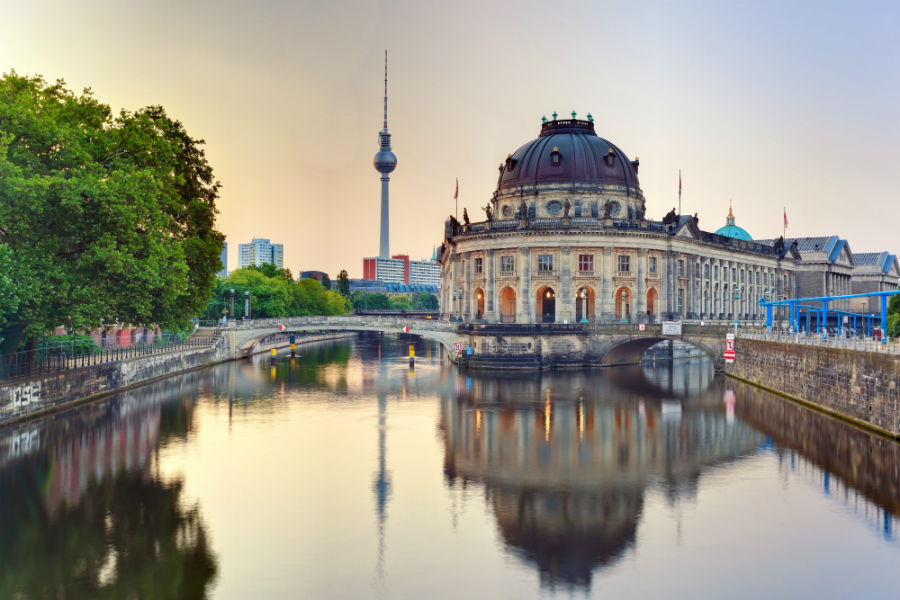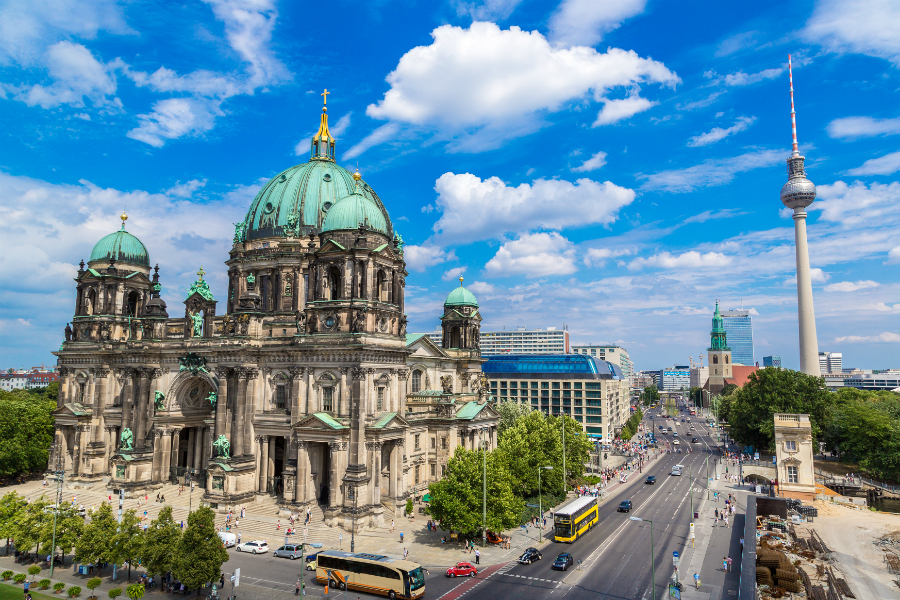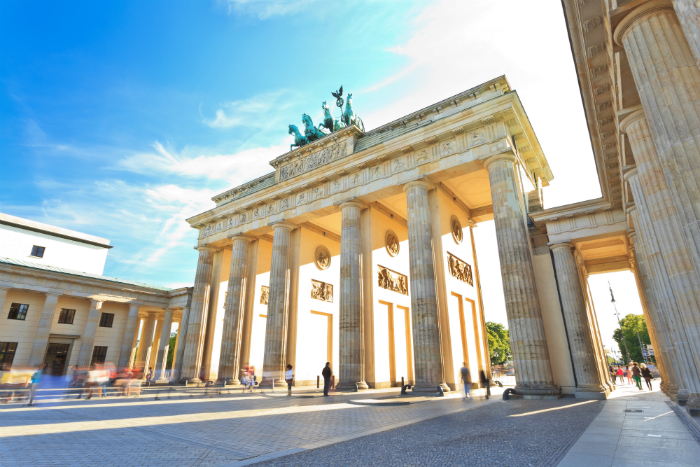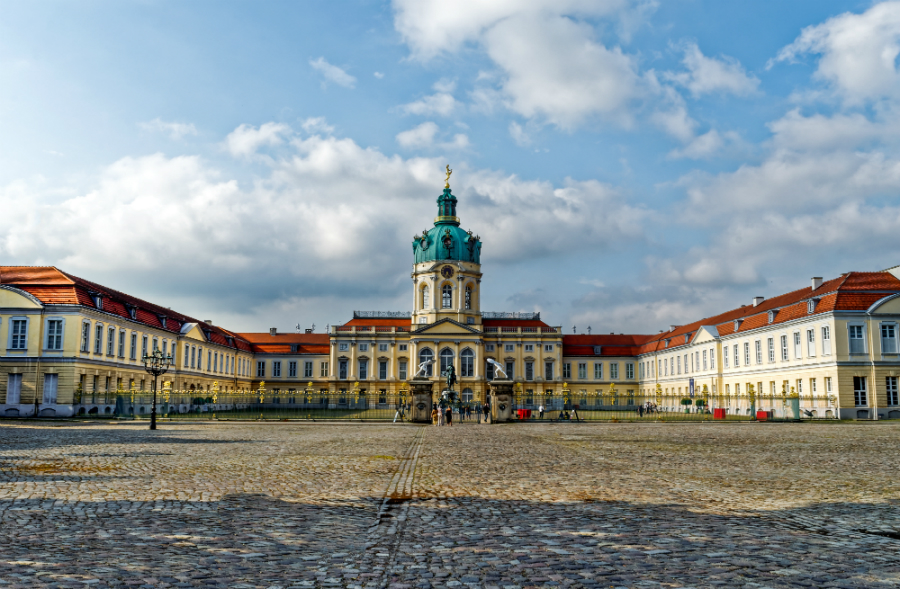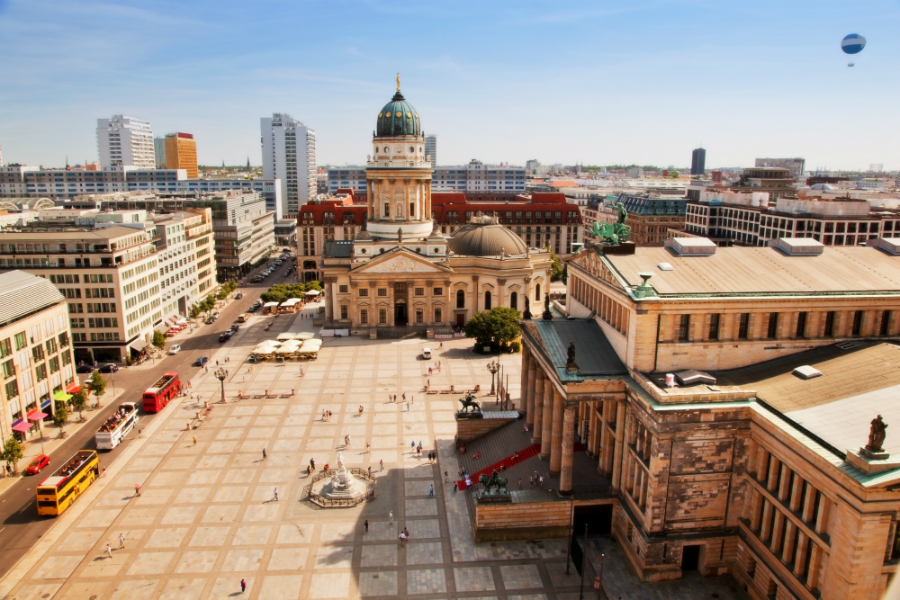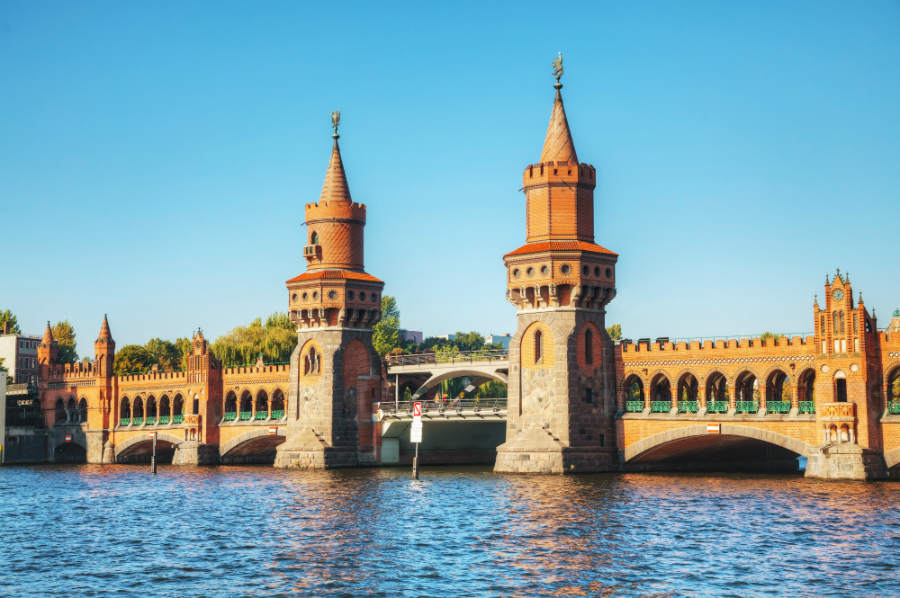The moment you arrive in Berlin, you’ll immediately be taken in by it’s magnetic urban scenery. Proof that a metropolis can be breathtaking, it’s history has created an eclectic variety of architecture. For architecture fans and history buffs who travel the world exploring beautiful buildings and walking on the footpaths of history, Berlin is a city that needs to be on their bucket list.
We’re not exaggerating when we say Berlin is a European hub with an architectural abundance showcased on every corner. The architectural tour we’re about to take you on (through the written word) is not exhaustive and it’s likely we’ll organise another one in the future to fill in the gaps. For now, however, we’ve selected ten buildings (or important architectural districts of Berlin) that showcase how beautiful this city is. While we’ll talk about the history of each building and a bit of about its design style, nothing beats a real-life walking tour of Berlin to admire these metropolitan art pieces.
Fernsehturm
To start off the tour we’re stopping by an internationally recognisable landmark of Berlin, the Fernsehturm (also known as the TV Tower) is one of the tallest structures in the European Union. After climbing it (or taking the lift) visitors can admire the city from the viewing platform where – on a good day – visibility can reach 70-80 kilometres. There’s also the option of dining in the revolving restaurant. At 1,207 ft it is easily viewable even from some of the suburbs, and is a great landmark to look out for if you get lost.
Museum Island
While not a building itself, this island on the Spree River is the location of five internationally significant museums. Added to the UNESCO list of World Heritage Sites in 1999, the Altes Museum, the Neues Museum, Alte Nationalgalerie, The Bode Museum, and Pergamon Museum are all examples of exquisite Berlin architecture.
Berlin Cathedral
Also located on Museum Island is the beautiful Berlin Cathedral. The current Cathedral was completed in 1905 and was designed in a high Renaissance style with Baroque accents by Julius Raschdorff. While a Cathedral by name it has never been used in practice as one as it has never been the seat of a bishop. During a reconstruction the building was simplified but it still remains an impressive piece of German architecture.
Brandenberg Gate
An icon of Berlin and one of the most widely recognised landmarks of Germany, it appears on Germany’s Euro coins and was visible in much of the film footage at the collapse of the Berlin Wall. Originally constructed in the late 18th Century it marked the start of the road to the town of Brandenburg an der Havel. It’s taken considerable damage over the years and it’s neoclassical design was fully restored in 2002.
Charlottenburg Palace
This palace in the Charlottenburg region of Berlin was originally commissioned at the end of the 17th Century by Sophie Charlotte, the wife of Friedrich III, Elector of Brandenburg, in what was once the village of Lietzow. Still standing all these years later the architectural design is of Baroque and Rococo influence. A large garden with woodland was added behind the palace and also includes a pavilion, a mausoleum, a belvedere and a theatre.
Gendarmenmarkt
Another place that isn’t a building itself but is still an example of gorgeous urban scenery, the Gendarmenmarkt is one of the most beautiful squares in Europe. On the edges of the square lies three landmark buildings: the Französischer Dom (French cathedral), Deutscher Dom (German cathedral) and the Konzerthaus (concert hall, which is considered to be one of the best in the world for acoustics). In the middle of the square is a statue of French poet, philosopher and historian Friedrich Schiller, which was created by German sculptor Reinhold Begas.
Nikolaikirche
The oldest church in Berlin, the original presbytery was built in 1402 and the two towers were added in 1877, before being completely re-built in 1987 due to damage during the war. Today the church is mainly used as a museum and sometimes a concert venue. It is located in Nikolaiviertel (St. Nicholas Quarter) a small neighbourhood which is the site of Berlin’s founding and an area of restored medieval buildings.
Oberbaumbrücke
A beautiful double-decker bridge, the Oberbaumbrucke is an important landmark today and throughout Berlin’s history. It was originally built in the 1700s and started out as a small wooden structure. It has been added to over the years to accommodate the growing Berlin population and in 1902 its upper level was added to accommodate a subway route, becoming a double-decker bridge. While the Berlin Wall was standing, the bridge belonged to East Germany and was pedestrian crossing for West German residents only. Since the fall of the Berlin Wall it is seen as a symbolism of German reunification.
Rotes Rathaus
Also known as the Red Town Hall, this is Berlin’s City Hall. The building is made from eye-catching red bricks and is situated in the Mitts district. The building contrasts the other architecture in the city with its North-Italian High Renaissance style design which is unusual for Berlin. In the plaza out front is the Neptunbrunnen, also known as the Neptune Fountain. It was sculpted in the late 19th Century but its original home was outside the former Stadtschloss (Berlin Castle) and was moved to its current location in 1969. The fountain itself was designed in a neo-Baroque design with a statue of Neptune in the middle overlooking four female statues that represent important rivers in the former state of Prussia.
Haus der Kulturen der Welt
To finish off this architectural tour of Berlin, we’re stepping into modern times with the House of World Cultures. It was designed in 1957 by American architect Hugh Stubbins and was a gift from the United States. Germany’s national centre for international contemporary arts with a focus on non-European cultures, it hosts art exhibitions, films, theatre and dance performances, concerts, author readings and academic conferences. The sculpture outside is Large Divided Oval: Butterfly which was designed by Henry Moore and was one of his final pieces before his passing.


